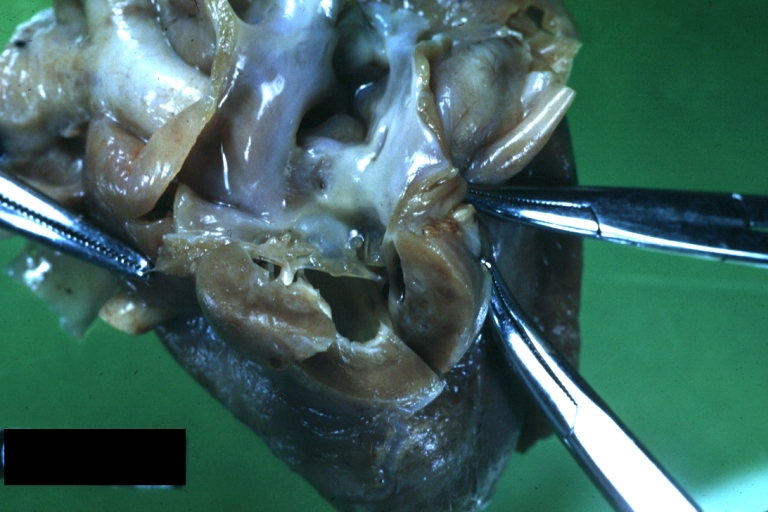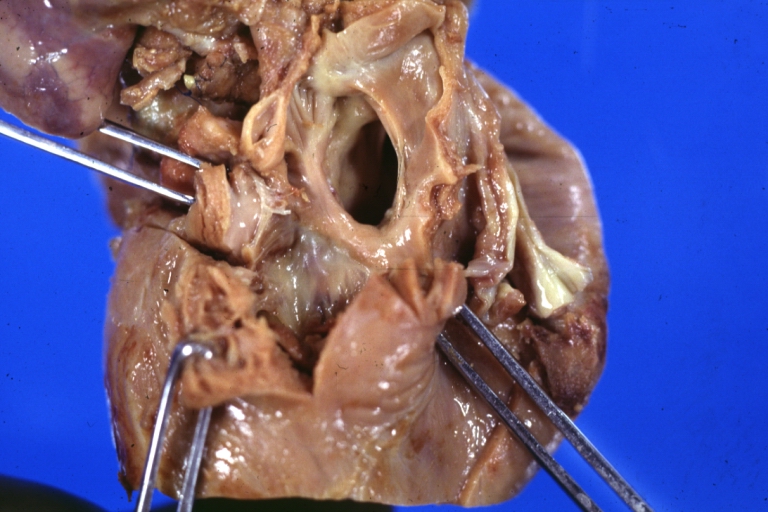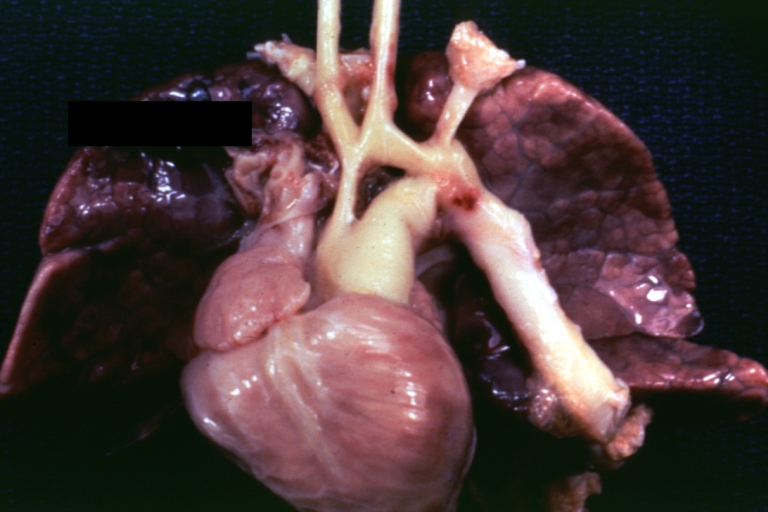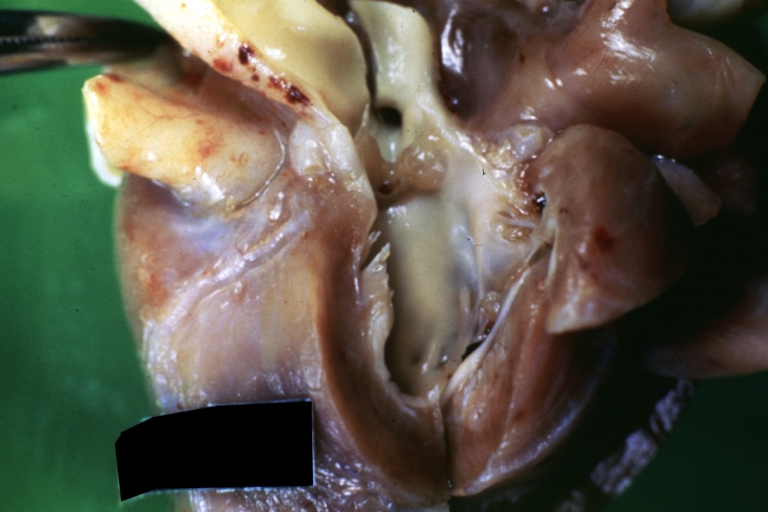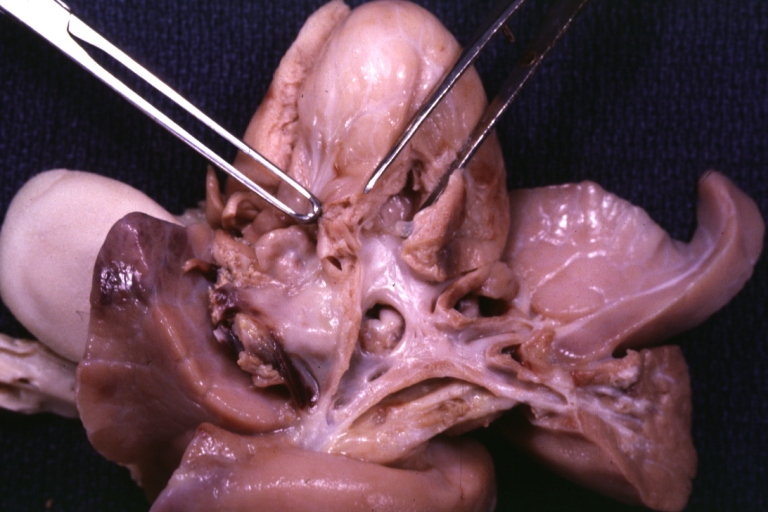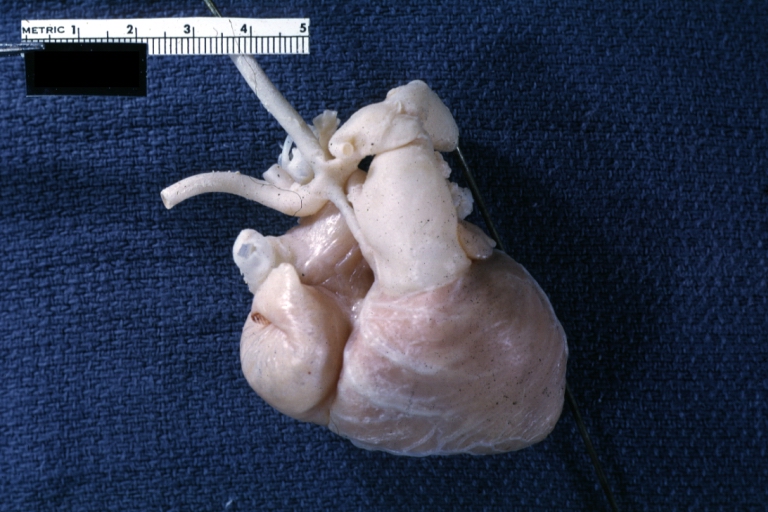Hypoplastic left heart syndrome: Difference between revisions
No edit summary |
No edit summary |
||
| Line 19: | Line 19: | ||
{{CMG}} | {{CMG}} | ||
'''Associate Editors-In-Chief:''' {{CZ}}; Keri Shafer, M.D. [mailto:kshafer@bidmc.harvard.edu] | '''Associate Editors-In-Chief:''' {{CZ}}; [[User:KeriShafer|Keri Shafer, M.D.]] [mailto:kshafer@bidmc.harvard.edu] | ||
{{Editor Join}} | {{Editor Join}} | ||
Revision as of 21:38, 7 January 2009
| Hypoplastic left heart syndrome | ||
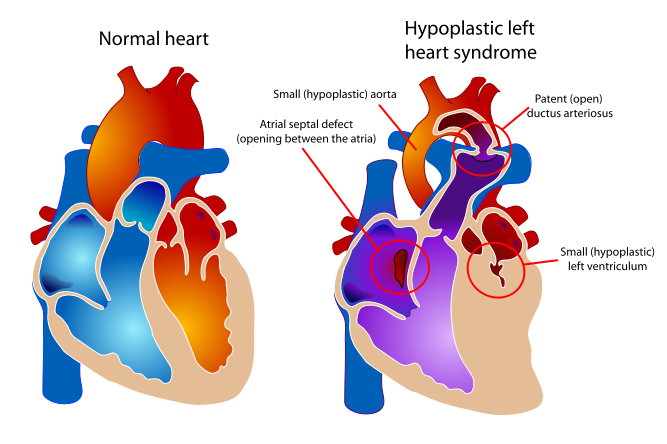 | ||
|---|---|---|
| Diagram of a healthy heart and one suffering from Hypoplastic left heart syndrome | ||
| ICD-10 | Q23.4 | |
| ICD-9 | 746.7 | |
| OMIM | 241550 | |
| DiseasesDB | 31507 | |
| MedlinePlus | 001106 | |
| eMedicine | ped/1131 | |
| MeSH | C14.240.400.625 | |
| Cardiology Network |
 Discuss Hypoplastic left heart syndrome further in the WikiDoc Cardiology Network |
| Adult Congenital |
|---|
| Biomarkers |
| Cardiac Rehabilitation |
| Congestive Heart Failure |
| CT Angiography |
| Echocardiography |
| Electrophysiology |
| Cardiology General |
| Genetics |
| Health Economics |
| Hypertension |
| Interventional Cardiology |
| MRI |
| Nuclear Cardiology |
| Peripheral Arterial Disease |
| Prevention |
| Public Policy |
| Pulmonary Embolism |
| Stable Angina |
| Valvular Heart Disease |
| Vascular Medicine |
Template:Search infobox Editor-In-Chief: C. Michael Gibson, M.S., M.D. [1]
Associate Editors-In-Chief: Cafer Zorkun, M.D., Ph.D. [2]; Keri Shafer, M.D. [3]
Please Join in Editing This Page and Apply to be an Editor-In-Chief for this topic: There can be one or more than one Editor-In-Chief. You may also apply to be an Associate Editor-In-Chief of one of the subtopics below. Please mail us [4] to indicate your interest in serving either as an Editor-In-Chief of the entire topic or as an Associate Editor-In-Chief for a subtopic. Please be sure to attach your CV and or biographical sketch.
Overview
Hypoplastic left heart syndrome (also known as HLHS), is a rare congenital heart defect in which the left side of the heart is severely underdeveloped. In babies with HLHS, the aorta and left ventricle are very small, and the aortic and mitral valves are either too small to allow sufficient blood flow or are atretic (closed) altogether. As blood returns from the lungs to the left atrium, it must pass through an atrial septal defect to the right side of the heart.
In a healthy human, the left side of the heart receives oxygen-rich blood from the lungs and pumps it out to the rest of the body; with these structures underdeveloped, they cannot circulate blood to other organs, and the right ventricle must pump blood to both the lungs, as it would normally, and to the rest of the body, a situation which cannot be sustained for long.
In cases of HLHS, the right side of the heart often must pump blood to the body through a patent ductus arteriosus. As the ductus arteriosus closes a few days after birth, blood flow is severely restricted and eventually cut off, leading to dangerously low circulation and eventually to shock.
Treatment
Without treatment, HLHS is fatal, but with intervention within a few days after birth, an infant may survive. A pediatric cardiac surgeon may perform a series of operations or a full heart transplant. In the meantime, the ductus may be kept open to allow blood flow using medication containing prostaglandin. Because these operations are complex and need to be individualized for each patient, a cardiologist must assess all medical and surgical option on a case-by-case basis.
The two methods for treatment of HLHS are transplantation and a 3-stage surgical procedure. The 3-stage procedure is a palliative procedure (not a cure), as the child's circulation is made to work with only two of the heart's four chambers. The first step is the Norwood procedure or the Sano shunt. The first step makes the right ventricle pump blood to the whole body (which the left ventricle normally does) AND to the lungs. During this time the baby may be medically fragile and have feeding problems because the heart is working very hard. The second stage, the Glenn or Hemi-Fontan, allows greater blood flow to the upper body and reduces some of the workload from the right ventricle. The final procedure, the Fontan (Fontan procedure) allows blood to automatically flow to the lungs (rather than being pumped there) and allows the right ventricle to only pump blood out to the body. The Norwood procedure is generally performed within a week of birth, the second stage at 3-6 months of age, and the Fontan at 18 months to 4 years of age. There are two types of Fontan: the Lateral Tunnel Fontan, and the Extracardiac Fontan.
Prognosis
While infants successfully treated for HLHS have a good chance of survival, they may experience chronic health problems for the rest of their lives. The 3-stage surgeries were developed in the early 1980's with no survivors prior to that time. Therefore, the earliest survivors are in their early 20's and the long term prognosis is unknown. However, the advances in surgical and medical techniques have helped increase the survival rate dramatically since the surgeries were first developed.
As is true for patients with other types of heart defects involving malformed valves [5], HLHS patients run a high risk of endocarditis, and must be monitored by a cardiologist for the rest of their lives to check on their heart function.
Pathological Findings
External links
- Hypoplastic Left Heart Syndrome information from Seattle Children's Hospital Heart Center
- Congenital Heart Information Network
- HLHS Information Page - created for parents expecting a child with HLHS. Includes questions to ask the physicians and insurance company.
- California Heart Connection - support network for those with congenital heart defects including Hypoplastic Left Heart Syndrome (HLHS.) Free online support group
Sources
- Card-AG, The Cardiologycal Working Group of the University Pediatric Clinic Munster
- Hypoplastic Left Heart Syndrome, American Heart Association
- Information on HLHS from the Cincinnati Children's Hospital Medical Center, accessed 9 July, 2006
- Hypoplastic Left Heart Syndrome - University of Michigan Congenital Heart Center
Template:SIB de:Hypoplastisches Linksherz-Syndrom nn:Hypoplastisk venstre hjarte-syndrom uk:Синдром гіпоплазії лівих відділів серця
